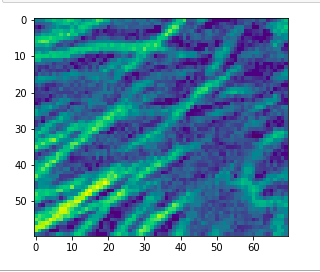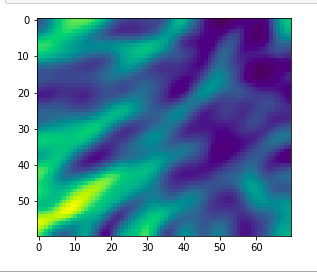Image Processing with SciPy and NumPy in Python
Last Updated : 12 May, 2022
In this tutorial, we will discuss Image Processing in Python using the core scientific modules like NumPy and SciPy. The images are made up of NumPy ndarrays so we can process and manipulate images and SciPy provides the submodule scipy.ndimage that provides functions that can operate on the NumPy arrays.

We will discuss how to open and write to images, and will also cover different manipulation and filtering techniques. So before getting started let's see how to install both modules.
Installation
Numpy: To install numpy type the below command in the terminal.
pip install numpy

SciPy: You can use the above command to install SciPy as well.
pip install scipy

Opening and Writing Images
The misc package of SciPy comes with some preloaded images. We will use those images to learn about image processing. One such image is provided by the face() function. The face() function will get a colored image of a raccoon face.
Example: Saving image using SciPy
Python3 from scipy import misc import imageio import matplotlib.pyplot as plt # reads a raccoon face face = misc.face() # save the image imageio.imsave('raccoon.png', face) plt.imshow(face) plt.show() Output:

Example: Creating NumPy array from the image
Here we will read the image using the imread() function.
Python3 from scipy import misc import imageio import matplotlib.pyplot as plt img = imageio.imread('raccoon.png') print(img.shape) print(img.dtype) plt.imshow(img) plt.show() Output:
(768, 1024, 3) uint8

Creating RAW file
A RAW file is a file containing minimally processed data from an image sensor. We can create this file using the tofile() method of the scipy package.
Example: Creating RAW file using SciPy
Python3 from scipy import misc import imageio import matplotlib.pyplot as plt # reads a raccoon face face = misc.face() face.tofile("raccoon.raw") This will create a .raw file in our current working directory.
Opening RAW File
For opening .raw file we will be needing the NumPy module that will use the fromfile() method. This function is an efficient way of reading binary data with known data type as well as parsing simply formatted text.
Example: Reading from RAW file using NumPy
Python3 import numpy as np img = np.fromfile('raccoon.raw', dtype=np.uint8) print(img.shape) Output:
(2359296,)
Getting Statistical Information
We can use the max() and min() functions to get the maximum and minimum along the given axis. And to find the mean we can use the mean() function.
Example: Getting min, max, and mean values
Python3 from scipy import misc img = misc.face() print(img.max()) print(img.min()) print(img.mean())
Output:
255 0 110.16274388631184
Cropping Image
As we know that images are represented by numbers in a matrix, so changing the value of the matrix will result in changing the original image. Let's see how to use this idea for cropping the image.
Example: Cropping the image
Python3 from scipy import misc import matplotlib.pyplot as plt # for grascaling the image img = misc.face(gray = True) x, y = img.shape # Cropping the image crop = img[x//3: - x//8, y//3: - y//8] plt.imshow(crop) plt.show()
Output:

Flipping Images
We can use the flipud() function of the numpy module to flip that image. This function flips the array(entries in each column) in up-down direction, shape preserved.
Example: Flip Image using Scipy
Python3 from scipy import misc import numpy as np import matplotlib.pyplot as plt img = misc.face() flip = np.flipud(img) plt.imshow(flip) plt.show()
Output:

Rotating Images
To rotate the images we can use the ndarray.rotate() function. This function rotates the image at a specific angle.
Example: Rotate Image using SciPy and NumPy
Python3 from scipy import misc,ndimage import matplotlib.pyplot as plt img = misc.face() rotate = ndimage.rotate(face, 30) plt.imshow(rotate) plt.show()
Output:

Filtering Images
In simpler terms image filtering is a process for enhancing or modifying an image where we can increase sharpness, enhance edges, or blurs the image. In Image filtering, some algorithm is applied to the pixel value of the given image and that algorithm determines the value of the output image. Let's see some image filtering operations that can be done using NumPy and SciPy.
Blurring Images
Blurring an image is a process of reducing the level of noise in the image. For this, we can either use a Gaussian filter or a unicorn filter.
Example: Blur Images using SciPy and NumPy
Python3 from scipy import misc,ndimage import matplotlib.pyplot as plt img = misc.face() blur_G = ndimage.gaussian_filter(img,sigma=7) plt.imshow(blur_G) plt.show()
Output:

Sharpening Images
Sharpening refers to increase contrast b/w light and dark regions and make the image more defined and brings out image features. There are three main reasons to sharpen your image: to overcome blurring introduced by camera equipment, to draw attention to certain areas, and to increase legibility. If blurry text is present in the image it becomes easy to read.
Example: Sharpening images using NumPy and SciPy
Python3 from scipy import misc, ndimage import matplotlib.pyplot as plt img = misc.face(gray=True).astype(float) blur = ndimage.gaussian_filter(img, 5) # Showing Blur Image plt.imshow(blur) plt.show() blur_G = ndimage.gaussian_filter(blur, 1) alpha = 30 sharp = blur+alpha*(blur-blur_G) # showing sharp images plt.imshow(sharp) plt.show()
Output:

Denoising Images
Denoising of an image refers to the process of reconstruction of a signal from noisy images. Denoising is done to remove unwanted noise from image to analyze it in better form. At first, let's create a noisy image -
Example 1: Creating a noisy image
Python3 from scipy import misc,ndimage import matplotlib.pyplot as plt import numpy as np img=misc.face(gray=True).astype(float) img=img[40:100,30:100] noise_img=img+0.9*img.std()*np.random.random(img.shape) plt.imshow(noise_img) plt.show()
Output:

To smooth the edges and the noise we use the Gaussian filter.
Python3 denoised = ndimage.gaussian_filter(noise_img, 2.2) plt.imshow(denoised) plt.show()
Output:

We can also preserve the edges using the median filter.
Python3 denoised = ndimage.median_filter(noise_img, 4) plt.imshow(denoised) plt.show()
Output:

Edge Detection
The process of image detection involves detecting edges in the image. It works by detecting discontinuities in the brightness. For high-intensity variations, we can use Sobel, a gradient operator-
Example: Edge detection using SciPy and NumPy
Python3 from scipy import misc, ndimage import matplotlib.pyplot as plt import numpy as np img = np.zeros((300, 300)) img[64:-64, 64:-64] = 1 img = ndimage.rotate(im, 30, mode='constant') img = ndimage.gaussian_filter(im, 7) # Original image plt.imshow(im) plt.show() # edge detection x = ndimage.sobel(im, axis=0, mode='constant') y = ndimage.sobel(im, axis=1, mode='constant') Sobel = np.hypot(x, y) plt.imshow(sob) plt.show()
Output:
